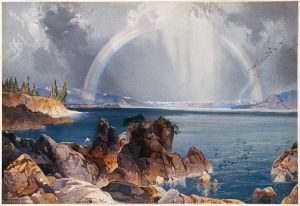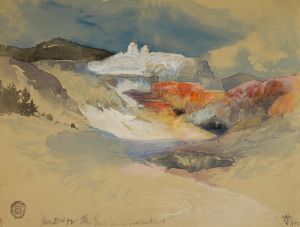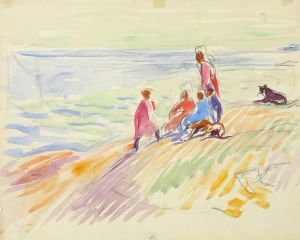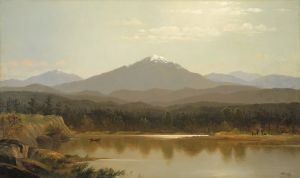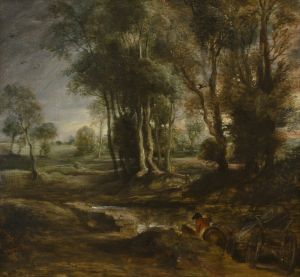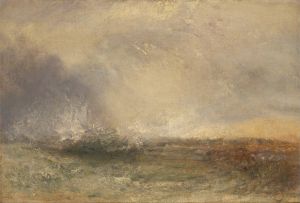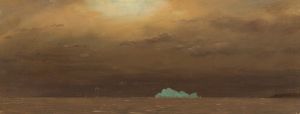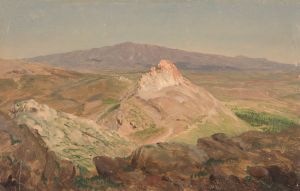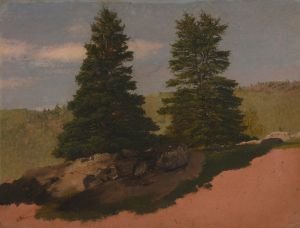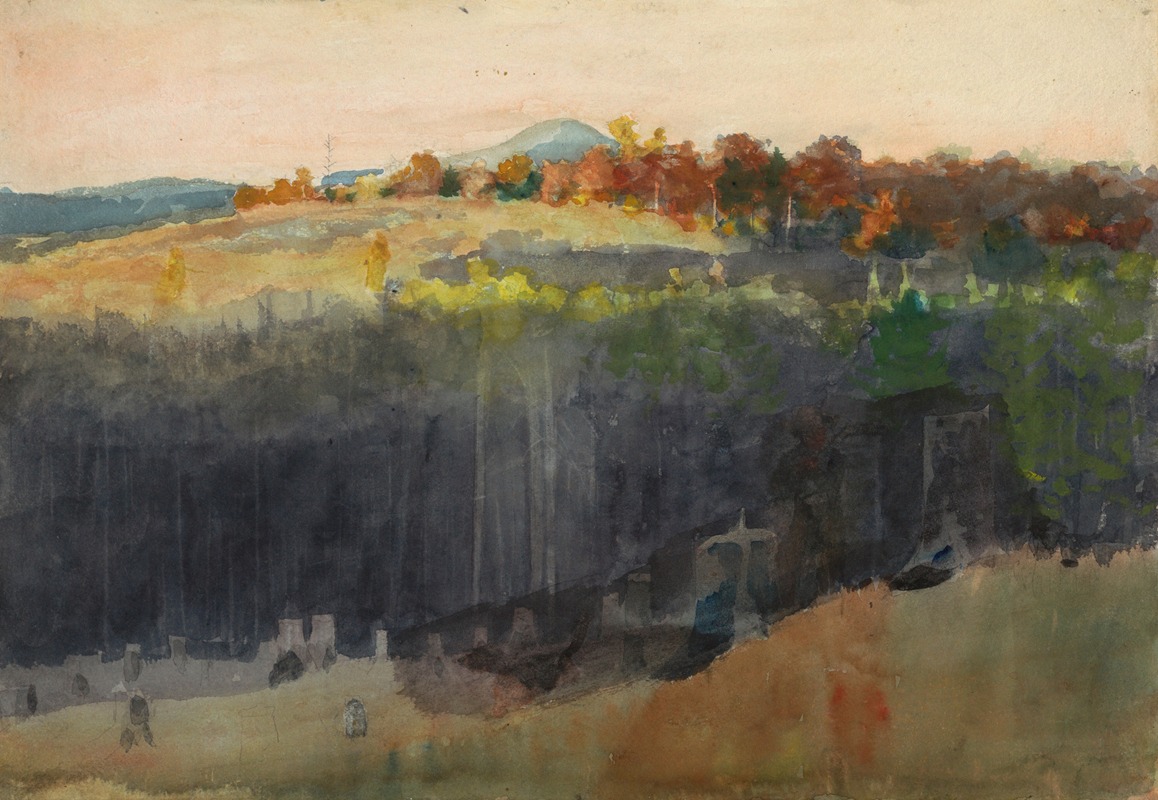
Valley and Hillside, Adirondacks
A hand-painted replica of Frederic Edwin Church’s masterpiece Valley and Hillside, Adirondacks, meticulously crafted by professional artists to capture the true essence of the original. Each piece is created with museum-quality canvas and rare mineral pigments, carefully painted by experienced artists with delicate brushstrokes and rich, layered colors to perfectly recreate the texture of the original artwork. Unlike machine-printed reproductions, this hand-painted version brings the painting to life, infused with the artist’s emotions and skill in every stroke. Whether for personal collection or home decoration, it instantly elevates the artistic atmosphere of any space.
Frederic Edwin Church, a prominent figure in the Hudson River School of American landscape painting, created "Valley and Hillside, Adirondacks" in 1870. This painting exemplifies Church's dedication to capturing the grandeur and beauty of the American wilderness, a hallmark of the Hudson River School's artistic philosophy. The movement, which flourished in the mid-19th century, emphasized romanticism and naturalism, often portraying the American landscape as a reflection of divine creation.
"Valley and Hillside, Adirondacks" is a testament to Church's meticulous attention to detail and his ability to convey the sublime aspects of nature. The painting depicts a serene view of the Adirondack Mountains, a region in upstate New York known for its rugged terrain and natural beauty. Church's choice of the Adirondacks as a subject reflects the 19th-century American fascination with exploring and documenting the nation's unspoiled landscapes.
In this work, Church employs a vibrant palette and precise brushwork to capture the interplay of light and shadow across the valley and hillside. The composition is carefully balanced, with the foreground featuring lush vegetation and a meandering stream that guides the viewer's eye towards the distant mountains. The sky, painted with soft hues, suggests a time of day when the light is gentle, possibly early morning or late afternoon, enhancing the tranquil atmosphere of the scene.
Church's ability to render such detailed and expansive landscapes was influenced by his extensive travels and studies. He was known for his expeditions to South America, the Arctic, and the Middle East, which broadened his perspective and enriched his artistic repertoire. However, his work in the Adirondacks remained deeply rooted in his appreciation for the American landscape.
"Valley and Hillside, Adirondacks" is not just a representation of nature but also an expression of the 19th-century American ethos. During this period, there was a growing sense of national identity and pride in the country's natural resources. Artists like Church played a crucial role in shaping this identity by highlighting the unique beauty of the American wilderness, which was often contrasted with the industrialization and urbanization occurring in Europe.
The painting is also significant for its technical execution. Church's use of light and color demonstrates his mastery of creating atmospheric effects, a skill that was highly regarded by his contemporaries. His landscapes often evoke a sense of awe and reverence, encouraging viewers to appreciate the majesty of nature.
Today, "Valley and Hillside, Adirondacks" is appreciated not only for its artistic merit but also for its historical significance. It serves as a reminder of a time when American artists were beginning to define their own cultural identity through the lens of the natural world. Church's work continues to inspire admiration for its beauty and its role in the broader narrative of American art history.
In summary, Frederic Edwin Church's "Valley and Hillside, Adirondacks" is a quintessential example of the Hudson River School's approach to landscape painting. Through its detailed depiction of the Adirondack Mountains, the painting captures the essence of 19th-century American romanticism and naturalism, reflecting both the artist's skill and the cultural values of the time.





